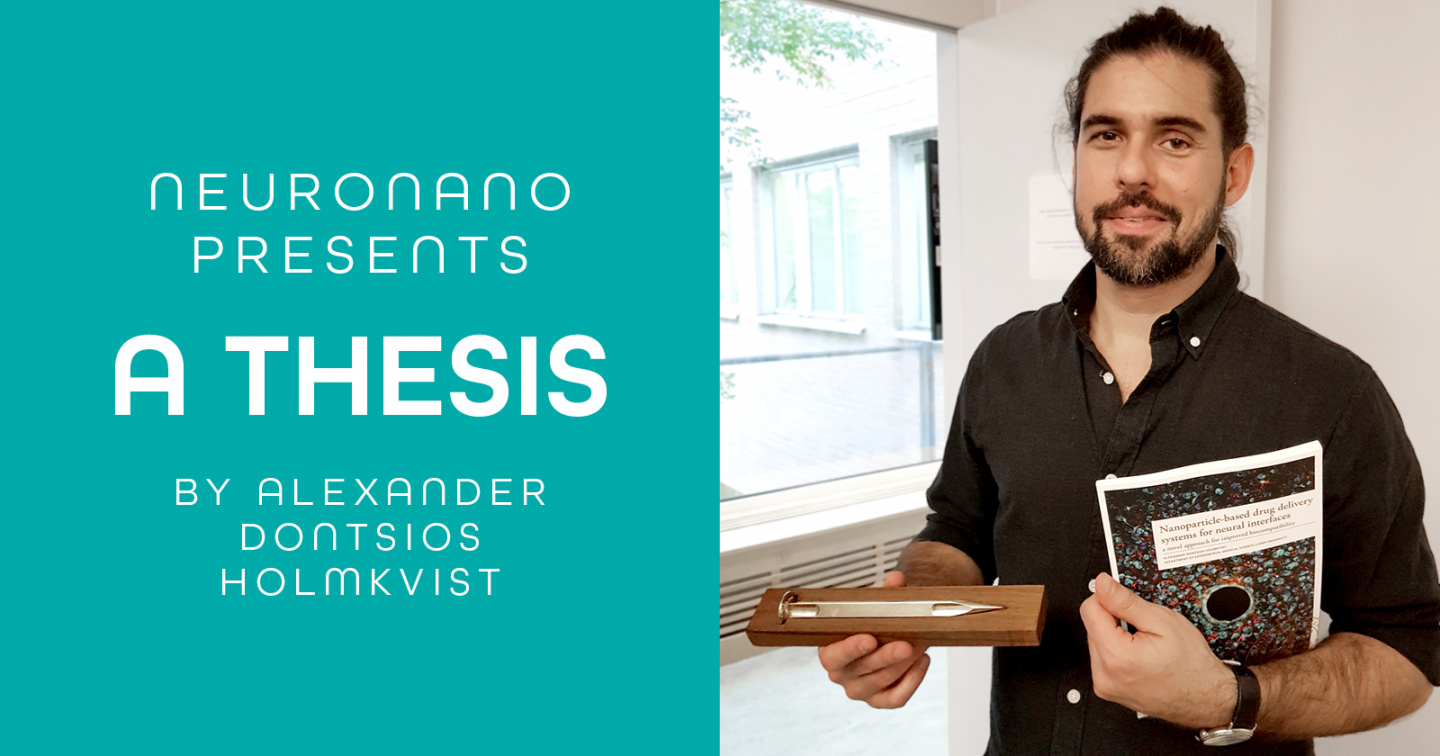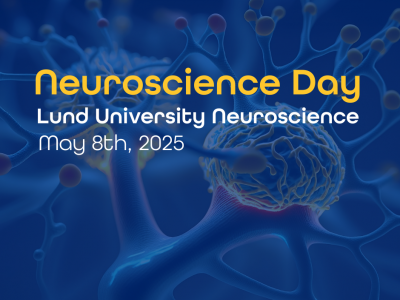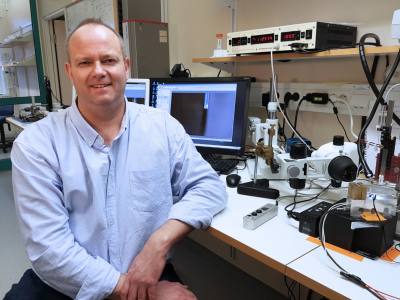Alexander Dontsios Holmkvist at the Neuronano Research Center has been working on a new method to safely introduce pharmaceuticals directly into specific parts of the brain together with colleagues. This work has now resulted in a thesis and several publications.
One of the challenges that comes with introducing electrodes into the brain, is the risk of inflammation and loss of nerve cells, causing brain injury. Therefore, the NRC research group has constructed PLGA nanoparticles containing medical drugs which are introduced to the brain directly through the electrodes, delivering the pharmaceuticals exactly where they are needed.
One of the main goals in the project was to develop and evaluate drug delivery systems that allow local administration of anti-inflammatory pharmaceutics. The drug Minocycline was encapsulated into biodegradable PLGA nanoparticles and thereby protecting the drug from degradation.
The nanoparticle construct resulted in a sustained release of Minocycline over 30 days, in vitro. This constitutes a substantial increase in release time compared to what has until now been achieved for the drug. The drug-loaded nanoparticles were embedded in a fast-dissolving gelatin coating surrounding the implant which enabled local and sustained drug release at the target site. This technique supersedes any of the conventional administration routes and minimizes the risk for systemic side effects.
The developed drug delivery system has been proven successful and was found to significantly attenuate the glial brain tissue responses around implanted microelectrodes in mice.
These results have been published and was also recently press released by Lunds University (article in Swedish), which you can read here. In the article you can also find a link to the publication.
Alexander Dontsios Holmkvist presented his thesis on November 19, 2020 in Lund and if you would like to read the thesis you can find it here!





